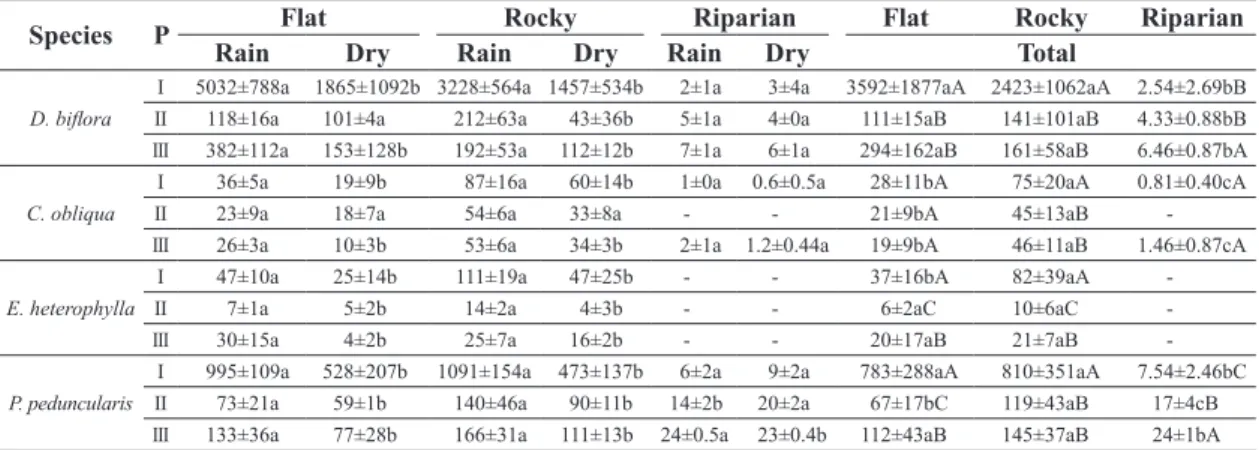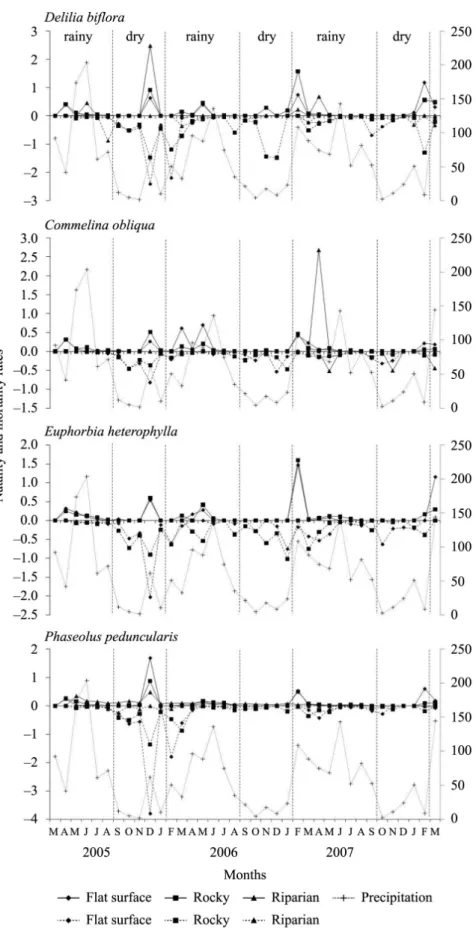The influence of microhabitat on the population dynamics of four herbaceous species in a semiarid area of northeastern Brazil
Texto
Imagem




Documentos relacionados
Assim, um de meus objetivos com o presente projeto é investigar de modo mais sistemático casos como (4)-(4’), especialmente quanto aos seguintes fatores: (a) o tipo de
The probability of attending school four our group of interest in this region increased by 6.5 percentage points after the expansion of the Bolsa Família program in 2007 and
Na hepatite B, as enzimas hepáticas têm valores menores tanto para quem toma quanto para os que não tomam café comparados ao vírus C, porém os dados foram estatisticamente
In the hinterland (Lika region) they are partly permeable but on higher positions at Velebit Mt. calcareous breccias are highly permeable. The best prove for the mentioned is
A reconstruction of the past annual precipitation rates for the last 280 years has been obtained from speleothem annual growth rates, derived from the
A reconstruction of the past annual precipitation rates for the last 280 years has been obtained from speleothem annual growth rates, derived from the distance
This increasing precedes that one suggested by the Orbital theory with about 10 kyrs and is due to the most powerful cycle of the solar luminosity with period of 11.5 kyrs
Ousasse apontar algumas hipóteses para a solução desse problema público a partir do exposto dos autores usados como base para fundamentação teórica, da análise dos dados